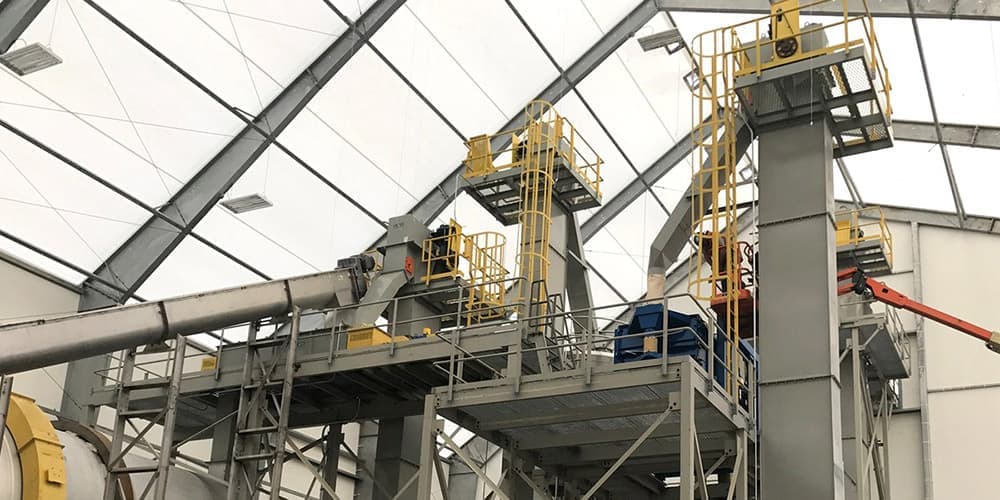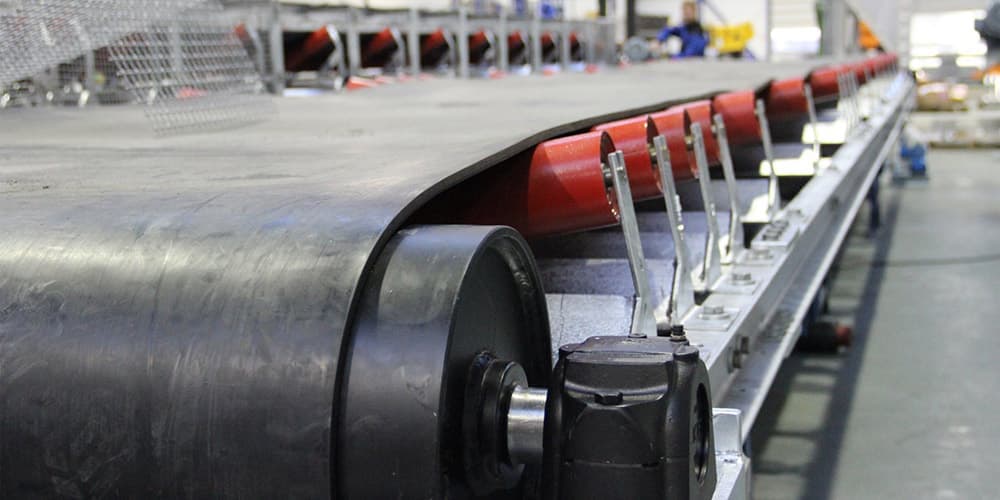5 Ways to Boost Bucket Elevator Performance
In fertilizer production line, bucket elevator is a common conveying system, which realizes the continuity of production process by lifting materials. However, with the increase of production demand, the original bucket elevator may face the problem of insufficient conveying capacity. In this article, we will discuss five ways to increase the conveying capacity of bucket elevators and introduce common conveying systems in fertilizer production lines.

Five ways to increase bucket elevator capacity
1. Increase belt/chain speed
For situations where a small increase in conveyor capacity is required, this can be accomplished by increasing belt or chain speed. This method can usually increase conveyor capacity by 10 to 75 tons per hour, but it depends on a number of factors. Increasing the speed must be balanced precisely with the feed rate to avoid feeding and/or unloading problems, especially with centrifugal hoists that are already operating at high speeds.
2. Optimizing Hopper Fill Rate
The fill rate of the material in the bucket is one of the most important factors affecting the design of a bucket elevator. Capacity can be increased by optimizing the fill rate of the material, provided that the material does not reach the upper limit of the bucket capacity. The capacity of the bucket is usually standardized by the amount of water it holds, but for solid materials, it is possible to tip the heap, so theoretically it is possible to overload the filling. However, it should be noted that overload filling will easily lead to material spillage.
3. Reducing hopper spacing
In some cases it is possible to increase the number of buckets by reducing the bucket spacing, but this only applies to centrifugal hoists. Bucket spacing on continuous hoists has been designed for optimum discharge and any change in spacing can cause problems. Reducing bucket spacing needs to take into account the type of bucket and the existing spacing; too tight a bucket can interfere with normal feeding and unloading.
4. Evaluating bucket styles
If the above methods do not achieve the desired increase in capacity, consider using a different bucket design. Buckets come in a variety of shapes and sizes, depending on whether the hoist is centrifugal or continuous. Customized bucket designs can also provide options. By changing the bucket geometry, adjusting the angle of the bucket front and increasing the height of the front lip, it is possible to increase capacity without changing the size of the elevator.
5. Replacing the bucket elevator
If a significant increase in capacity is required, it may be necessary to replace the elevator. Replacing the elevator can lead to additional opportunities for design improvements, such as converting from a single chain to a double chain, significantly increasing the potential capacity. Space constraints need to be considered when installing new equipment, and the design may need to be modified to fit the available space.

How to choose the right bucket elevator?
Choosing the right bucket elevator is critical to ensuring the efficiency and reliability of your production line. Here are some key factors to consider when selecting a bucket elevator:
- Material Characteristics: First, the type of material to be lifted needs to be considered, including its particle size, density, humidity, viscosity, and so on. Different material characteristics may require different types of bucket elevators.
- Conveying capacity: According to the needs of the production line to determine the required conveying capacity, including the amount of material to be lifted per hour.
- Lift Height: Determine the maximum height at which the material needs to be lifted, which will influence the design of the bucket elevator, such as bucket size and spacing.
- Bucket type and design: Bucket elevator buckets can have different shapes and designs, including deep buckets, shallow buckets, buckets with front baffles, etc. Choose the right bucket type according to the material characteristics.
- Drive system: Consider the drive system of the bucket elevator, including motor power, reducer type, etc., to ensure that the machine can meet the required power and torque.
- Chain or belt type: Select the appropriate chain or belt material and type according to the working conditions and material characteristics of the elevator.

Common conveying system in fertilizer production line
In fertilizer production line, common conveying systems include bucket elevator, belt conveyor, scraper conveyor and screw conveyor. Below is an introduction to these systems and an analysis of their characteristics and output.
Bucket Elevator
Features:
- High efficiency: suitable for vertical conveying of large quantities of materials.
- Versatility: Handles a wide range of materials, including powders, granules and lumps.
- Small footprint: vertical design saves space.
Bucket elevator output depends on bucket size, number and lifting speed, usually ranging from 10 TPH to 800 TPH.
Belt Conveyors
Features:
- Continuity: Suitable for continuous conveying of materials.
- Flexibility: Conveying path can be adjusted as required.
- Simple maintenance: simple structure, easy to maintain.
The output of a belt conveyor depends on the belt width, speed and material characteristics and usually ranges from 50 TPH to 2000 TPH.

Scraper Conveyor
Features:
- Adaptable: Suitable for a wide range of materials, including wet and sticky materials.
- Good sealing: suitable for conveying materials with dust and odor.
- Durable: sturdy structure, suitable for heavy-duty conveying.
The output of a scraper conveyor depends on the scraper size, chain speed and material characteristics and usually ranges from 20 TPH to 500 TPH.
Screw Conveyor
Features:
- Compact: suitable for applications where space is limited.
- Wide range of applications: can handle a wide range of materials, including powder and granular materials.
- Simple operation: easy to install and operate.
Screw conveyor output depends on screw diameter, speed and material characteristics, usually between 10 TPH and 300 TPH.

